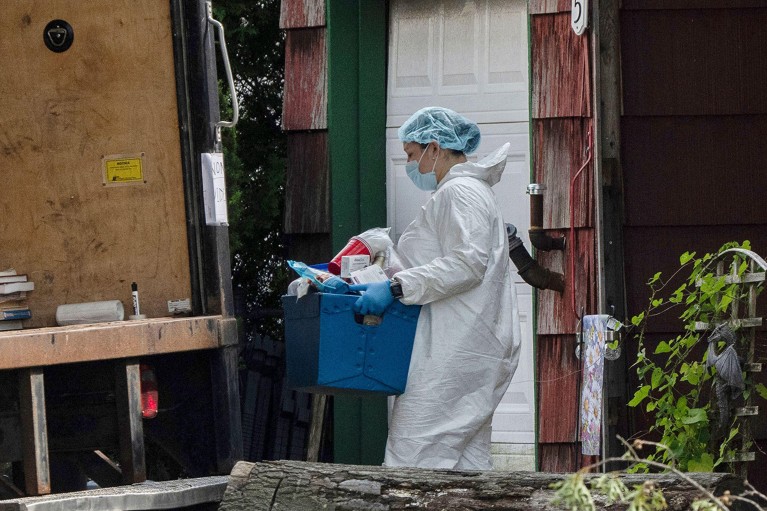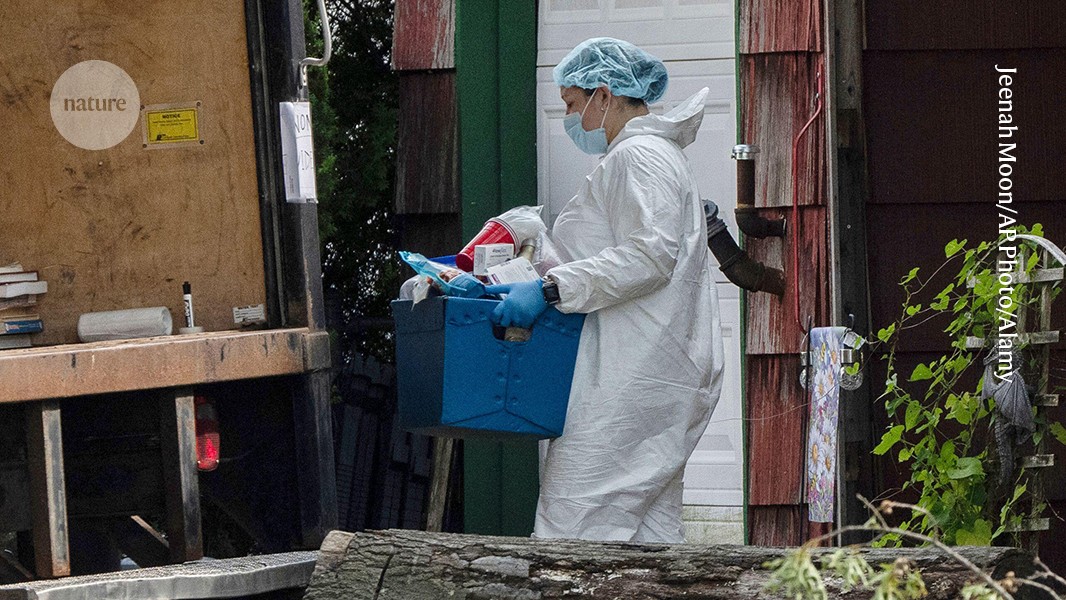
A crime laboratory officer removes material from the house of the prime suspect in the Gilgo Beach killings.
Credit: Jeenah Moon/AP Photo/Alamy
A New York judge recently ruled against a request to exclude advanced DNA sequencing as evidence in the trial of an alleged serial killer. This decision opens the door for whole-genome sequencing—a method used to analyze everything from ancient DNA in fossils to modern criminal cases—to be used in US courts.
“This is a significant advancement in the use of DNA evidence,” says Nathan Lents, a biologist at John Jay College of Criminal Justice in New York City. “It means investigators can now revisit evidence that was previously deemed too small, too old, or too damaged to be useful.” He notes that cold-case units across the country are likely combing through their evidence to see what can now be tested successfully.
A technology matures
The Gilgo Beach killings, a series of murders in Suffolk County, New York, occurred between 1993 and 2011. Many victims were sex workers whose bodies were discovered near the beach. Architect Rex Heuermann was charged with seven of these murders in 2023 and 2024, partly based on hair samples found at the crime scenes.
Back in 2010, investigators found insufficient genetic material in these hairs for traditional forensic analysis. However, since then, genomic technology has advanced rapidly.

Rex Heuermann appears in a New York court in 2023.
Credit: James Carbone/AP Photo/Alamy
Forensic scientists often rely on the traditional polymerase chain reaction (PCR) method to identify suspects from hair and other samples, analyzing short tandem repeats (STRs) in DNA. However, today’s scientists are also capable of sequencing entire genomes and examining single-letter variations in DNA, enhancing their ability to identify individuals even from damaged samples, such as those from Neanderthals or the Gilgo Beach case. Until now, this cutting-edge technique had not been commonly accepted as evidence in court.
The prosecution in the Gilgo Beach case enlisted Astrea Forensics in Santa Cruz, California, to analyze the hairs discovered on the victims. These hair samples were rootless, meaning they contained insufficient DNA for standard STR profiling (rootless hairs primarily consist of keratin and lack significant genetic material, as Lents explains).
Astrea successfully sequenced the limited DNA available in the hairs and then applied statistical analysis to search for single-nucleotide polymorphisms (SNPs)—which are variations in the DNA sequence unique to individuals. Even amidst degradation, whole-genome sequencing combined with this analysis can reveal thousands of SNPs, which can help identify a person’s specific genetic pattern.
Following this, the scientists at Astrea compared the SNP profiles they generated with those in genealogy databases. People often submit their DNA to services like 23andMe and Ancestry, which return SNP profiles. Users can then upload this data to sites such as GEDMatch to discover potential relatives. Many users opt to share their data with forensic genealogists, which is how Astrea was able to focus their investigation on Heuermann and his family.
Setting precedent
The defense team in the Gilgo Beach case initially contested the reliability of Astrea’s DNA-analysis techniques, developed by palaeogenomics researcher Richard ‘Ed’ Green at the University of California, Santa Cruz. (Green has chosen not to comment for this article due to the ongoing prosecution.) The defense argued that Astrea’s statistical methods were unproven and sought to question their validation.
Summary: A New York judge’s ruling allows advanced DNA sequencing to be used as evidence in a high-profile case involving alleged serial killer Rex Heuermann, paving the way for the use of cutting-edge genomic technology in court. This could revolutionize cold cases, enabling law enforcement to revisit previously unsolvable crimes. The case exemplifies the evolving landscape of forensic science as it adapts to new technological breakthroughs.





